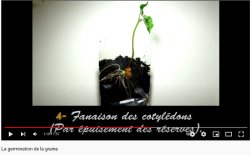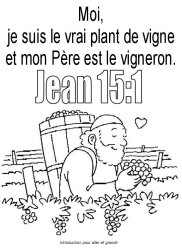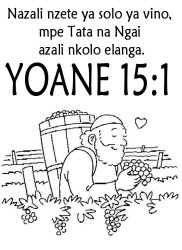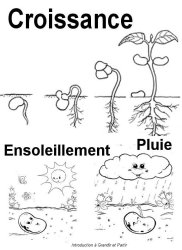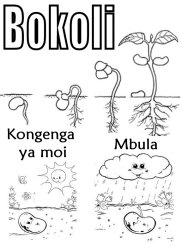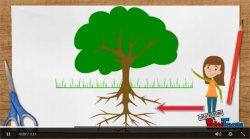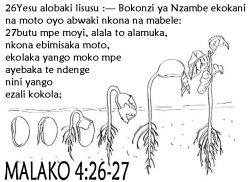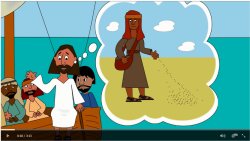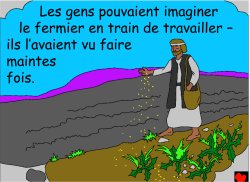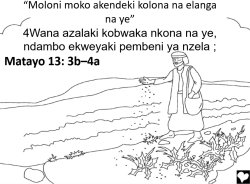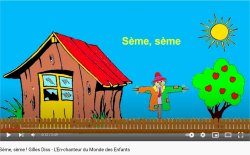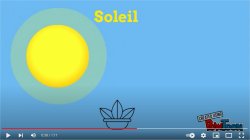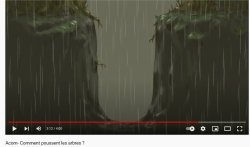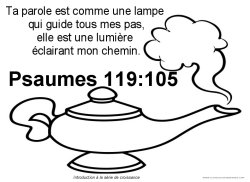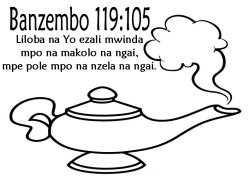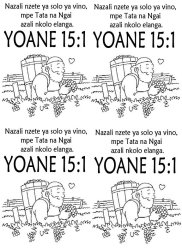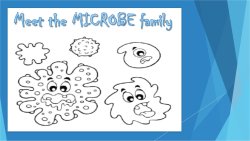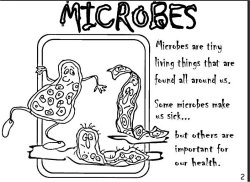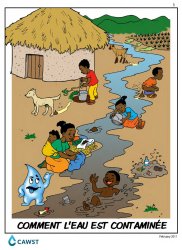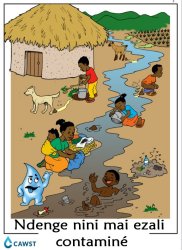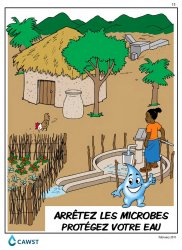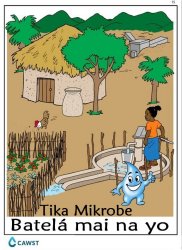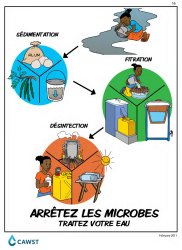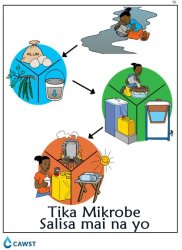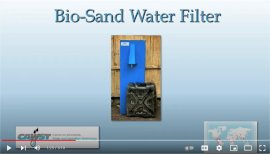
|
 Contact UsFormation Grandir et PartirÉvangélisation des enfantsProgramme Grandir et AllerUne Goutte d'espoir
Pays sélectionnésEnglish Humanitarian ArmCurriculum UCT |
home>>bokola mpe bokende >>bokoli
Bokola mpe Bokende - Bokoli Bienvenue dans notre programme Français 'Granldir et Aller' ' pour enfants UNE INTRODUCTION À LA CROISSANCE DANS LE NATUREL Téléchargez Enseignement (To translate into Lingala)
Les graines se présentent sous différentes formes et tailles, mais chaque graine porte en elle tout le potentiel et la promesse de ce qu’elle peut devenir. Chaque graine est constituée d’un embryon et d’une réserve de nourriture, entourés et protégés par un tégument externe. Le magasin de nourriture est suffisamment grand pour permettre à la plante de faire pousser ses premières feuilles et de commencer à produire sa propre nourriture.
Tout comme nous avons besoin de la « Lumière du monde » et de «l'Eau vive ».
|
N'oubliez pas que les enfants ont appris qu'ils ont tous besoin de différents types de sols, d'eau, de soleil, de temps et de la bonne température pour s'épanouir et grandir. Les botanistes vous diront que le sol détermine la santé et la force d’une plante. Plus le sol est bon, plus la plante sera saine, fructueuse et forte.
"Un autre enfin a reçu la semence « sur la bonne terre ». C'est celui qui écoute la Parole et la comprend. Alors il porte du fruit : chez l'un, un grain en rapporte cent, chez un autre soixante, chez un autre trente." Matthieu 13:23 23 Moun ki resevwa pawòl la tankou grenn ki tonbe nan bon tè a, se moun ki konprann pawòl la lè yo tande li. Lè sa a, yo donnen. Gen ladan yo ki bay san, yon lòt bay swasant, yon lòt bay trant.Matye 13:23
Dans l'histoire de Jésus, la graine représente la parole de Dieu et la terre représente les personnes qui entendent la parole. Bien souvent, les gens entendent la parole de Dieu, mais ils ne la comprennent pas. Ils ne l'acceptent pas. C'est comme la graine sur le sentier. Le malin vient et enlève la graine qui a été plantée dans leur cœur avant qu’elle n’ait la possibilité de pousser dans leur vie. La graine tombée sur un sol rocailleux représente ceux qui entendent la parole et la reçoivent avec une grande joie, mais lorsque la nouveauté s'estompe et que l'excitation s'estompe, ils s'éloignent parce qu'ils n'ont pas de racines profondes. La graine tombée parmi les mauvaises herbes représente les gens qui entendent la parole de Dieu et croient ce qu'elle dit, mais bientôt le message est remplacé par les soucis de la vie et le désir d'obtenir plus de choses. Si des graines sont plantées dans un tas de mauvaises herbes, les mauvaises herbes prendront bientôt le dessus ! Une personne qui entend la parole de Dieu, essaie de comprendre ce qu'elle dit et de la mettre en pratique dans sa vie quotidienne est comme une bonne terre. Dans un bon sol, la graine prend racine, pousse et produit une récolte abondante. C’est le genre de sol que Jésus veut que nous soyons. Quel type de sol es-tu ?
L'eau est vitale pour la graine car c'est ce qui l'aide à absorber les nutriments du sol et c'est ce qui l'aide à germer. Pour ce faire, les graines absorbent l’eau et traversent la coquille pour prendre racine. C'est pourquoi, dans cette série, nous avons toute une Série «Bokola mpe Bokende - MAI» , en Français/Lingala.La lumière du soleil fournit la chaleur et l’énergie nécessaires à la croissance et au développement de la graine.
Vous apprendrez tout sur la lumière et la Lumière du monde dans la série «Bokola mpe Bokende - POLE» Le temps est essentiel à la germination et à la croissance. Le temps est un processus. Vous ne pouvez pas ralentir ou accélérer le temps ; il va à son rythme et permet à la graine de germer, de se développer et de grandir, jusqu'à ce qu'elle atteigne sa pleine croissance et devienne elle-même fructueuse.
Enfin, la température est importante dans le processus de germination. Si une graine se trouve dans un environnement dépourvu de la bonne température, ses chances de succès sont sérieusement limitées, même si tous les autres éléments sont présents. S'il fait trop chaud, il sèchera et s'il est trop humide, il pourrira. Les deux extrêmes entraîneront la mort de la graine. Ces cinq ingrédients sont essentiels si l'on veut que la graine libère toute la promesse et le potentiel qu'elle porte et si elle veut devenir ce qu'elle est censée être. La même chose est vraie pour le chrétien. Nous avons besoin de certains ingrédients si nous voulons nous développer, grandir et devenir fructueux et matures. Vous en apprendrez davantage dans notre Français/Lingala «Bokola mpe Bokende - Série ya Bokoli ya Molimo»'
Assurez-vous de recevoir la Parole en vous, afin de ne pas tomber dans les mauvaises choses ou de vous laisser entraîner dans l'erreur. Cachez la parole de Dieu dans votre cœur afin de ne pas pécher contre Lui (Ps 119 :11). Un chrétien a aussi besoin d’eau. Pourquoi c'est important? Parce que d’abord nous venons à Christ, nous repentons de nos péchés et sommes baptisés d’eau. Le baptême d'eau est essentiel pour tout croyant. Ce n'est pas ce qui vous sauve, mais c'est un acte d'obéissance qui scelle votre salut. Mais alors c'est le Saint-Esprit qui opère le salut dans nos cœurs. Pour moi, l'eau est une image du Saint-Esprit. Le Saint-Esprit nous révèle les choses dans la Parole. Le Saint-Esprit nous enseigne. Le Saint-Esprit nous guide et c'est le remplissage du Saint-Esprit qui nous donne le pouvoir de vivre cette vie chrétienne. Il est essentiel à la fécondité de chaque chrétien. C'est tout au long de notre vie que le chrétien s'épanouit et grandit pour devenir la personne que Dieu veut qu'il soit. Au fil du temps, Dieu est capable de supprimer l’ancien et de libérer en nous le nouveau. Nous passons d’un degré de gloire à un autre. C'est petit à petit, alors soyez patient dans le processus.
Every seed carries within it all the potential and promise of what it can become - Christ First LA SEMAINE PROCHAINE: Nous commencerons notre Français/Lingala «Bokola mpe Bokende - MAI» Introduction à l'enseignement de l'eau filtrée Le Filtre BioSable (FBS) : Cet enseignement sera introduit dans les écoles d'Haïti et de la RD du Congo qui seront équipées de nos filtres Le Filtre BioSable (FBS) en complément de ABCD en Afrique et de l'UCT dans les Caraïbes. Cet enseignement hebdomadaire sur le filtre Le Filtre BioSable (FBS) consistera à informer les enfants sur le filtre à eau Le Filtre BioSable (FBS), à l'aide de PowerPoints et d'aides visuelles ainsi que de vidéos et de documents en français et en créole haïtien pour la RD du Congo et Haïti, pour les aider à comprendre l'importance de l'hygiène personnelle et de l'eau. assainissement. Dans le monde, 2,2 milliards de personnes n'ont toujours pas accès à l'eau potable. Plus de la moitié de la population mondiale n'a pas accès à des installations sanitaires sûres. Trois milliards de personnes n'ont pas accès à des installations de lavage des mains avec du savon. Pourtant, 673 millions de personnes pratiquent la défécation à l'air libre. Les conséquences d'une eau, d'un assainissement et d'une hygiène insalubres (WASH) sur les enfants peuvent être mortelles. Plus de 700 enfants de moins de 5 ans meurent chaque jour de maladies diarrhéiques en raison du manque de services WASH appropriés. Dans les zones de conflit, les enfants risquent près de 20 fois plus de mourir de maladies diarrhéiques que du conflit lui-même. Water, Sanitation and Hygiene (WASH) | UNICEF Embedded Microsoft Office presentation, powered by Office.
Comment l'Eau est Contaminée Message clé : L'eau peut être contaminée de plusieurs façons . Questions Possibles : • D'où vient l'eau ? • Que veut dire "eau contaminée"? • Comment l'eau peut-elle être contaminée? • Est-ce que seuls les humains peuvent contaminer l'eau ? • Où les gens vont-ils faire leurs besoins/déféquer ? • Est-ce bien de déféquer/faire ses besoins n'importe où ? • Comment protéger l'eau que nous utilisons ? Contenu: Une eau dans laquelle il y a des microbes et des polluants est une eau contaminée. Les excréments des humains et des animaux sont la cause principale de la contamination de l'eau. Quand les gens ou les animaux vont déféquer dans la nature ou près d'une source d'eau, ils contaminent l'eau. Quand les latrines ne sont pas bien utilisées ni entretenues, l'eau est contaminée. Les excréments se mélangent à l'eau et toutes les personnes qui utilisent cette eau sont contaminées. L'eau contaminée arrive dans nos maisons par les rivières, les puits, les tuyaux, les seaux. L'eau peut aussi être contaminée quand: • Les récipients dans lesquels l'eau est conservée ne sont pas bien nettoyés • Les récipients dans lesquels l'eau est conservée ne sont pas couverts et ne sont pas protégés contre la contamination • Le seau ou la corde utilisée pour remonter l'eau du puits est en contact avec la saleté (par exemple des mains sales, les animaux, le sol) • L'eau contaminée a parfois l'air sale mais même l'eau claire peut être contaminée et vous rendre malade. Il ne faut pas croire que toutes les sources sont potables. L'eau de pluie est pure quand elle tombe du ciel mais elle se salit quand elle arrive sur le toit de la maison. L'eau sous-terraine peut être de bonne qualité mais elle est parfois contaminée par des produits chimiques ou par les latrines. L'eau de surface n'est pas une eau de bonne qualité car elle est très souvent contaminée. Vérifier si le message est bien compris: • Explique avec tes mots à toi ce que veut dire « contamination » « contaminé ». • Quelles sources d'eau potable sont facilement contaminées ? • Pourquoi sont-elles facilement contaminées? • Pensez-vous que l'on puisse trouver des microbes dans l'eau que vous sortez d'un puits ? Comment ? • Est-ce que les ordures peuvent contaminer notre eau ? • Quelles autres mauvaises habitudes peuvent entrainer la contamination de l'eau ? • Est-ce que une eau claire pourrait être contaminée ?
Arrêtez les Microbes - Protégez Votre Eau Message: Il existe plusieurs façons d'éviter la contamination de l'eau que nous buvons. Questions: • Que faites-vous pour protéger votre eau? • Utilisez-vous un récipient pour stocker l'eau de pluie ? • Si Oui, quel genre de récipient utilisez-vous? • Votre eau provient-elle d'une fontaine, d'un puits, ou d'une pompe ? • Si oui, votre puits est-il couvert ? • Votre pompe ou votre fontaine se trouve-t-elle sur une plate forme? • Ou va l'eau qui tombe par terre quand vous utilisez votre pompe, ou votre puits ou votre fontaine ? Contenu: Nous devons éviter que l'eau que nous buvons soit contaminée et pour protéger notre eau il faut • Protéger et couvrir votre puits. • Construire une plateforme sous votre pompe ou votre fontaine. • Construire une rigole pour détourner l'eau perdue. • Construire un puits perdu. • Protégez votre source en construisant une chambre de collecte. • Stockez votre eau de pluie dans des récipients fermés. • Utilisez un seau propre et une corde propre pour remonter l'eau de votre puits. • Clôturez vos sources pour éloigner les animaux. • Ayez un abreuvoir séparé pour les animaux. • Nettoyez votre cour et les environs de la maison. • Protégez vos sources d'eau en plantant des arbres le long des ruisseaux et des rivières. • Entretenez un secteur bien boisé au-dessus/en amont de votre source d'eau. Si nous faisons tout cela, la qualité de l'eau que nous consommons sera meilleure, mais nous devrions toujours traiter l'eau pour nous assurer qu'elle est potable. Vérifier la compréhension du message: • Comment pouvons-nous protéger les endroits où nous nous procurons de l'eau ? • Que devrions-nous faire de l'eau "perdue" ou gaspillée aux points d'eau ? • Comment pouvons-nous protéger nos sources ? • Comment faut-il conserver l'eau de pluie ? • Pourquoi faut-il recouvrir nos puits ? • Pourquoi construire une plateforme sous notre pompe ou notre fontaine ? • A quoi sert un puits perdu ?
Arrêtez les Microbes - Traitez Votre Eau Message: L'eau contaminée peut être traitée pour la rendre potable. Questions: • Traitez-vous l'eau que vous buvez ? • Avez-vous entendu parler des traitements de l'eau ? • Etes-vous satisfaits de l'eau que vous buvez ? Contenu: Pour avoir une eau de bonne qualité, il est important de traiter votre eau. En traitant l'eau, vous tuez les microbes qui vous rendent malades. Il y a plusieurs façons de traiter l'eau. Certaines méthodes sont faciles ou rapides et d'autres méthodes sont plus compliquées et plus chères. Peut importe la méthode que vous choisissez, il est important de bien le faire et de le faire régulièrement. Si vous le faites correctement et régulièrement, votre eau sera toujours de bonne qualité. La première étape du traitement de l'eau est la sédimentation. Quand l'eau est trouble, il faut la sédimenter. Les microbes s'accrochent aux sédiments et donc, en enlevant les sédiments de l'eau nous éliminons les microbes. Nous pouvons sédimenter notre eau en utilisant des graines, des fruits de cactus ou des produits chimiques. Tout cela va nous aider à enlever les sédiments et à rendre l'eau plus claire. Après la sédimentation, il est nécessaire de filtrer l'eau pour éliminer encore plus de microbes. Il existe plusieurs méthodes de filtration . Par exemple, utiliser un linge en coton, ou un filtre à biosable ou un filtre à pot en céramique. Même si l'eau à l'air propre et claire après la filtration, il faut encore la désinfecter. La désinfection : On peut désinfecter l'eau en la faisant bouillir, ou bien en y ajoutant du chlore ou en la mettant au soleil (la méthode SODIS). Si on respecte ces trois étapes, notre eau sera bonne à boire. Il y a plusieurs types de traitements, ainsi, nous pouvons donc choisir celle qui convient le mieux à notre famille. Vérifier si le message est bien compris: • Pourquoi faut-il traiter l'eau ? • Quelles sont les trois étapes nécessaires pour traiter l'eau ? • Si l'eau de votre source est claire, pensez-vous qu'elle peut nous rendre malade ? • Comment pouvons-nous retirer les microbes de l'eau ? • Pourquoi est-ce qu'il y a différentes méthodes de traitement de l'eau ?
La prochaine session, nous commencerons notre Français 'Grandir et Partir Série d'eau'
GROW AND GO CURRICULUM
|
| Copyright © 2024 www.UnitedCaribbean.com. All rights reserved. Disclaimer Click to Contact us |
